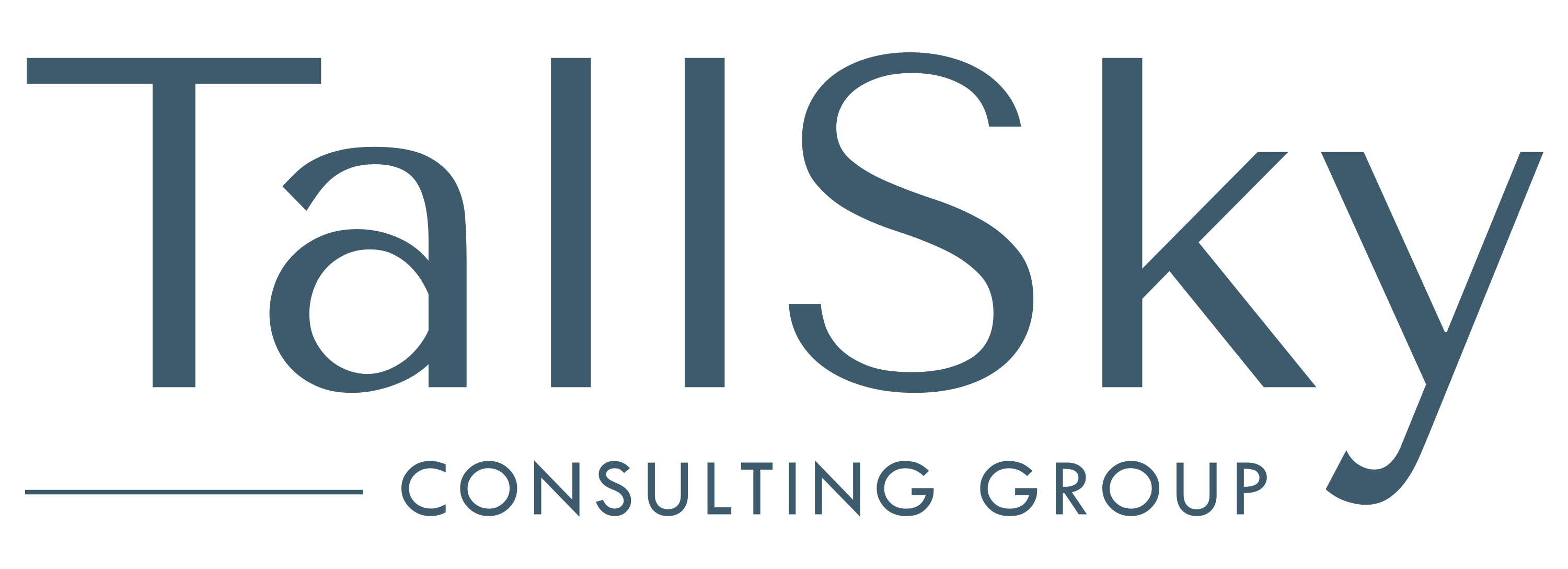
This week’s TallSky topic for you includes BREAKING NEWS.
Assessing your staffing needs
Many businesses are trying to manage their operations and forecast what their business revenue will be in the next few months, and then determine how to flex their staffing requirements in response – today, next month and for the future. You may be considering recalling laid off employees or simply downsizing your work force to minimize expenses and do more with less. Here are a few things to think about.
- Temporary Layoff: Initially, under BC Employment Standards, a temporary layoff provided employees with thirteen (13) weeks of benefits within a 20-week period. The employee would be terminated once the 13 weeks of benefits is exhausted if there was no recall by the employer. The employer has the option to recall the worker within the 20-week period and as long as the worker earned more than 50% of their average earnings each week, they remain protected from termination on temporary layoff during the 20 weeks. The BC Government initially extended benefits under this provision to sixteen (16) weeks to align with CERB benefits. Late yesterday, they announced a further extension to twenty-four (24) weeks, expiring on August 30, 2020. Further details on this new announcement will help determine what eligibility requirements will be for the extension however, this is a positive step to protecting jobs and potentially avoiding group termination.
For many employers who currently have employees on temporary layoff, this will provide welcome relief from having to terminate employees because they were unable to recall them due to a continuing lack of work. It allows a little more time to bring back workers in Phase III, and it provides employees with extended protection from termination as many were nearing the end of their temporary layoff period of sixteen (16) weeks and were uncertain of their employment status.
- Terminations: What if you have determined you will be unable to recall employees because the needs of your business have changed, or perhaps reduced revenues require fewer staff? In this situation, a termination may be the most fair and respectful decision you can make for your employees and team. Its not unusual for laid off employees to feel a certain loyalty to their employer and want to return to work with their company. In addition, they are usually aware of their obligation to be available for recall. The earlier they can be informed about a termination of their employment, the sooner they are free to seek new employment.
Keep in mind that your obligations under BC Employment Standards for termination pay exist whether the temporary layoff period expires or if you terminate the employee early, and there is always the risk of a challenge to the termination. Providing consideration (monies) in return for a signed release is a recommended best practice.
- Recalling Employees: If you determine you have the ability to return a laid off employee to work, give them some advance notice of the potential return date so they have the opportunity to make arrangements and be prepared for their first day back. Some employees may have child care or family care issues and will require accommodation. A flexible schedule is an option, or they may have to remain off until coverage can be arranged. For many others, the idea of returning to their jobs may be stressful. They may be fearful of the potential transmission for COVID-19, so be considerate in your demands, try be flexible, and communicate your safety plans. You will have more success bringing a trained worker back into your operation.
Employees can refuse to return to work if there is a genuine concern for their health and well-being, and inspectors will assess these claims and determine if they are legitimate. Most often these claims are in health care settings. If you ensure your COVID-19 Safety Plan has been implemented and your team has been trained in the protocols it’s unlikely the employee will be successful with this type of claim.
- Recruiting: There are plenty of candidates who are actively seeking work and want to be working again, and many are very qualified for your business or opportunity. While some may continue to take advantage of CERB and want to “take the summer off”, your business will likely be able to hire talented new employees at this time.
Our team at TallSky Consulting continues to support our clients, new and valued. If there is anything we can do to assist you in assessing your staffing needs or help you recruit truly talented candidates through this challenging period, please don’t hesitate to contact us. We continue to offer our expertise as and when you need it, and from our virtual offices to yours.
DISCLAIMER: The information is provided as general information on these topics, and given the rapidly evolving environment, they may not be relevant with recent updates or changes on the topic. These materials are not meant to be a substitute for specific legal advice. Please do not rely solely upon this information for making decisions regarding employees in your workplace.
